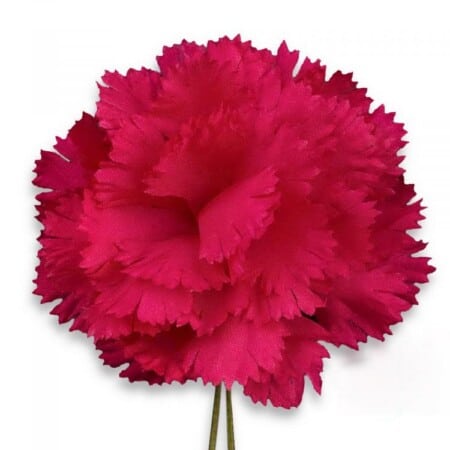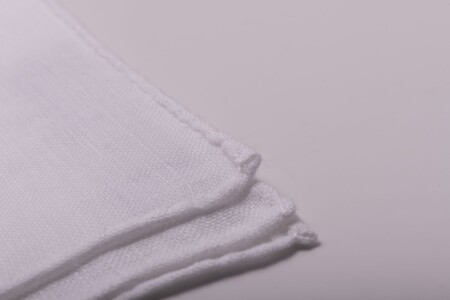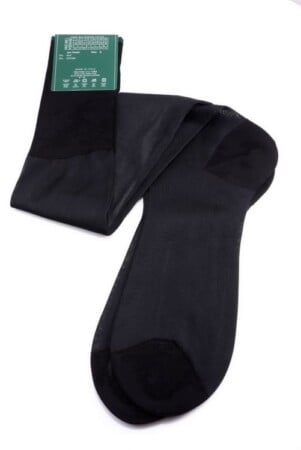Don’t Let the Black-Tie Optional Dress Code Intimidate You!
Imagine this situation: you’ve received an invitation to an event, and you see that the dress code is Black-Tie Optional. You aren’t sure exactly what constitutes Black-Tie Optional attire, and you are worried that you might make a mistake. Sound familiar? Don’t worry, if this has ever happened to you, you are not alone, but do not fear, this guide will cover everything you need to know about the Black-Tie Optional Dress Code.
- Don’t Let the Black-Tie Optional Dress Code Intimidate You!
- Understanding What Black-Tie Optional Is
- Conventional Black Tie Can Be Worn at a Black-Tie Optional Event
- The Components of a Black-Tie Optional Outfit
- What Not to Wear for Black Tie Optional
- Special Considerations for Weddings
- How to Host a Black Tie Optional Event
- Conclusion
- What Fort Belvedere accessories is Preston wearing for his Black-Tie Optional look?
- Black-Tie Optional FAQ
Satisfying the Black-Tie Optional Dress Code is as Simple as Following a Few Easy Guidelines
As with all formal dress codes, the Black-Tie Optional Dress Code has rules that you will be expected to follow. Understanding these rules is relatively simple, however, and abiding by these rules, which we will explain in full to you, will ensure that you have an impeccable ensemble so that you don’t have to worry about what you are wearing and can instead enjoy your event.
Even if you’re already comfortable with the Black-Tie Optional dress code, we hope that you’ll still enjoy this guide as an opportunity to review the basics and perhaps to even find more style inspiration.
Five Contemporary Black Tie Optional Looks
Understanding What Black-Tie Optional Is
How Black Tie and Black-Tie Optional Differ


At its most basic level, Black-Tie Optional is an evening dress code that extends to you the option to wear Black Tie. You are free to partake of this option or follow a modified dress code that will help you approximate the feel, if not the exact components, of a Black-Tie ensemble.
“Black-Tie Optional” Means Wear Black Tie or Similar If Desired
Black-Tie Optional events are designed to communicate a judgment-free acknowledgment that not all men necessarily own or can afford a conventional Black-Tie ensemble. It effectively conveys that the hosts of an event are planning on wearing standard Black Tie or the female equivalent and invite their guests to do so as well, although it isn’t required or necessarily expected.
“Black Tie” Means Wear Black Tie
Conversely, the Black-Tie dress code is an explicit request that you wear conventional Black Tie, which is to say, a Black-Tie dinner ensemble with a dinner jacket and formal trousers, which is often called a tuxedo. In this dress code, you are not given a choice between wearing Black Tie or not; you are explicitly asked to do so.
Black-Tie Optional is an Invitation to Dress in Black Tie If You Can

Therefore, if you wish to dress in a traditional Black-Tie outfit for a Black-Tie Optional event, you are perfectly welcome to do so. In fact, if someone owns one or perhaps more standard Black-Tie ensembles, he should look at Black-Tie Optional events as an excellent opportunity to wear them and to dress to that high standard.
An important note on this topic, if you do choose to wear a standard tuxedo to a Black-Tie Optional event, you should still assemble your outfit in accordance with all of the traditional rules of proper Black Tie. The “optional” in the Black-Tie Optional dress code isn’t an excuse to try to dress down parts of a conventional tuxedo or incorporate other less formal elements.
Black-Tie Optional Offers Additional Options for Gentlemen Who Won’t Be Wearing Conventional Black Tie
Effectively, the “Optional” in Black-Tie Optional means that men who do not wish to or are not able to wear conventional Black Tie have the option to wear something else. Doing so will not violate the established dress code, and you should never feel ashamed of not wearing full Black Tie if you choose to accept the opportunity to instead wear Black-Tie Optional.
Should You Rent a Tuxedo or Wear Black-Tie Optional? Find the Best Fit!
If you are invited to a Black-Tie Optional event, you might consider renting a tuxedo in order to wear a conventional Black-Tie ensemble. Bu the fact of the matter is, if you already have access to garments that will allow you to create a Black-Tie Optional ensemble, your own clothes may, literally and figuratively, be a better fit for you.

The fact of the matter is, fit is the most crucial thing when a man is assembling any ensemble, and it stands to reason that ninety-nine times out of a hundred, something that a man already has in his own closet is going to fit him better than a rented tuxedo ever could. So, you will likely look better, and feel more confident, in a well-fitted Black-Tie Optional ensemble than you will in a rented Black Tie ensemble.
That being said, if you find yourself attending an increasing number of Black-Tie Optional events, it may behoove you to purchase a complete Black Tie ensemble so that you are well-prepared should you receive an invitation to a strict Black Tie event, for which a Black-Tie Optional ensemble would not be appropriate.
Conventional Black Tie Can Be Worn at a Black-Tie Optional Event

As mentioned above, you will never be overdressed or in violation of the Dress Code if you opt to wear Black Tie at a Black-Tie Optional event. To understand what this dress code entails and how to flawlessly execute it every time, be sure to utilize our authoritative Black Tie Guide, which covers in full detail with helpful images every aspect of the Black-Tie dress code.
Our Pocket Black Tie Guide
The Components of a Black-Tie Optional Outfit
Dark, Not Necessarily Black, Suit
Acceptable Colors: Black, Charcoal, or Deep Navy



Your suit should always be very dark at a Black-Tie Optional event to approximate the formality of the black tuxedos you’ll be seeing. Wearing a black suit to a Black-Tie Optional event is an acceptable choice, just so long as you don’t try to make it look like an imitation tuxedo by pairing it with a black bow tie.
If you’re not wearing a black suit then, charcoal and deep navy are also excellent choices. Because of its historical associations with country wear, brown suits should typically be avoided, but if you do happen to have a suit that’s a very dark brown, you could probably get away with it for a Black-Tie Optional event.
Acceptable Patterns and Cuts: Solids or Discreet Patterns
Solid colored suits are your best choice here as well, though a very faint pattern such as a light and broad windowpane could also be acceptable. You can go with two pieces or three in your suit, and it can be single or double-breasted, just as long as you are, in fact, wearing garments that have all been sourced from the same cloth, and you’re following all of the guidelines we just mentioned.

Can I wear a single-breasted Suit?
Yes, You Can!
A single-breasted suit is perfectly acceptable as Black-Tie Optional Attire as its simple silhouette will call to mind the elegant lines of a dinner jacket. If desired, you may also wear a waistcoat in matching fabric.

Can I wear a double-breasted suit?
Yes, You Can!
Because the double-breasted suit is slightly more formal than a single-breasted suit, wearing a double-breasted suit will help elevate the formality of your look without straying too far into accessories or styles usually associated with conventional Black Tie.
Plain-Colored Dress Shirt
White or Blue Shirts with French Cuffs are Ideal
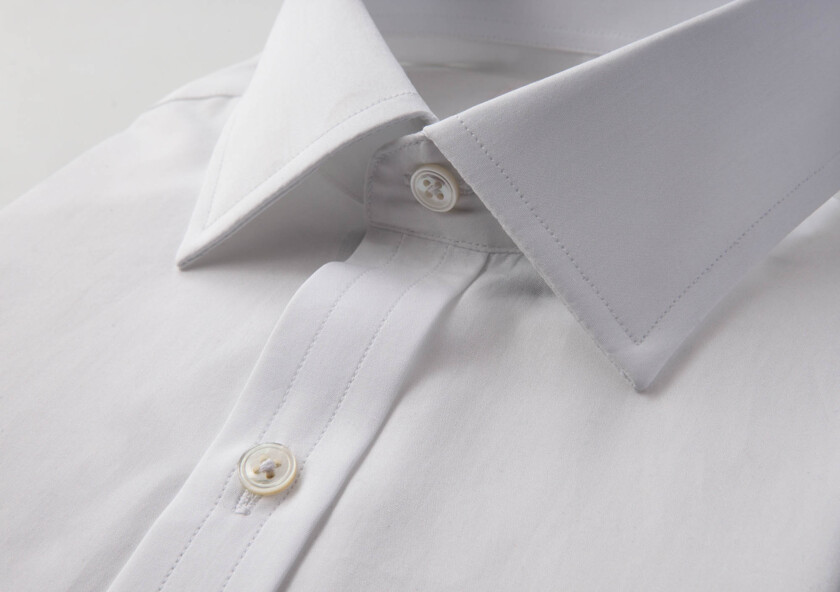
In order to provide a suitable amount of contrast with a dark suit you’ll be wearing, your shirt should ideally be a white dress shirt for a Black-Tie Optional event. You can get away with light blue in a pinch, but it’s best to avoid it, and any other color, even if it’s in a very pale pastel shade, would be too informal for an event of this nature.
Similarly, you should try to avoid patterned shirts as well and instead again go with plain, solid colors.
French cuff dress shirts are ideal because they’re also a standard feature of actual tuxedo shirts but if you have a shirt with barrel cuffs, you can wear that too and it will still be acceptable.

Avoid This:
Tuxedo Shirt
A traditional tuxedo shirt, with features like a wing collar, pleats, or bib front, should not be worn as part of the Black-Tie Optional dress code unless worn with a full tuxedo. Pairing a tuxedo shirt with a dark suit will not dress up the formality of the suit, but it will make your entire ensemble look mismatched.
Dark & Solid Neckwear


As with your suit, a tie worn to a Black-Tie Optional event should be dark monochromatic, and solid instead of patterned. Small and very subtle patterns can work, but solids are best. A black necktie can be worn here, but as we just mentioned, black bow ties should be avoided with dark suits. So better choices than a black necktie would be a necktie or a bow tie in something like burgundy, navy, a very dark forest green, or a very dark plum.
A smooth silk tie would be most formal though a tie with a bit of texture can work as well, perhaps something in a shantung silk or a wool grenadine, for example.

Avoid This:
Black Bow Tie
Similar to the aforementioned tuxedo shirt, you should avoid wearing an actual black bow tie with this ensemble as it may give the impression that you do not know the distinction between a tuxedo jacket and a suit jacket.
Dark Leather Shoes
Black Leather Oxfords or Derbys are Ideal
Regarding shoes, black oxfords are your best bet here, plain and simple. They should ideally be plain toed, though a conservative cap toe is also perfectly acceptable. Black derby shoes, if well shined and conservatively styled, can also work here. However, derby shoes in any other color, such as brown, are too informal for a Black-Tie Optional event as their open lacing system is more apparent, and they’re going to clash with the black oxfords and tuxedo shoes that you’ll probably be seeing on other men at a Black-Tie Optional event.

Dark Oxblood or Dark Brown Leather Shoes are Acceptable
If you do have a pair of oxfords in a very deep brown or oxblood color, and they’ve been polished to a mirror shine, you could probably get away with wearing them, but black is safest.
Evening Socks
In order to be as appropriate and conservative as possible, your dress socks should ideally match the color of your suit’s trousers. You could match your socks to the dark color of your tie if you wanted to be just a bit more creative, but definitely avoid anything in bright and flashy colors or loud patterns. Now is not the time for crazy socks!
Wool, cotton, or any other natural fabric is acceptable, but for the most dignified look, consider a pair of black silk evening socks.

RECOMMENDED
Over-the-calf Black Silk Socks
75% silk, 25% cotton socks hand-finished in Italy, designed to never sag and to always appear elegant thanks to their over-the-calf design.
Accessories
As with conventional Black Tie, the area where you have the most significant amount of latitude in a Black-Tie Optional dress code is with your accessories. However, it is essential that you balance imagination with taste to ensure that your overall ensemble remains appropriate.
The Gentleman’s Gazette offers an extensive playlist that covers in detail every aspect of the proper and refined utilization of accessories.
Cufflinks

When worn with an elegant French-cuffed shirt, cufflinks are an excellent accessory for a Black-Tie Optional occasion. They can be silver, gold of any color, or any other solid-colored metal, and they can also feature designs and some conservative stones. However, stay away from anything with logos or miniatures, as these are a little too whimsical for the nature of a Black-Tie Optional affair.
Additional Jewelry
Tie bars, collar clips, and rings can also be worn so long as they are similarly conservative in nature. Also, try to match your medals at an event like this to achieve the pinnacle of understated elegance.
Pocket Square



As with most ensembles that are more formal, a white pocket square will look best to echo the shirt, although you can consider an edging detail in a similar color to that featured on your tie or your socks. You could wear a dark monochromatic pocket square, but if you do this, you could run the risk of looking like your pocket square and tie came in a matching set, which is never a good look.
Regarding fabrics, linen is your best choice for Black-Tie Optional events because its muted sheen and subtle texture complement the understated nature of the dress code, although silk is acceptable as well. A simple square or puff fold will be in keeping with the formality of the evening.
Boutonniere
A boutonniere is an excellent accessory to add color and life to a formal ensemble, and the same applies for a Black-Tie Optional outfit. Something understated and in a light color is going to be the ideal choice.




The Ideal Accessories for Black Tie or Black-Tie Optional Outfits

What Not to Wear for Black Tie Optional
Light-Colored Suit



Given the fact that Black-Tie Optional events, as with standard Black Tie events, take place in the evening, a light-colored suit would look informal and inappropriate. You can get away with something like medium grey in a pinch, but it’s best to stick to the dark colors we outlined previously.
Combinations

Just as a tuxedo features a matching jacket and pants, except in the case of warm weather Black Tie, your suit should also feature a jacket and pants and an optional waistcoat that are all cut from the same cloth.
Brightly Colored or Heavily Patterned Neckwear
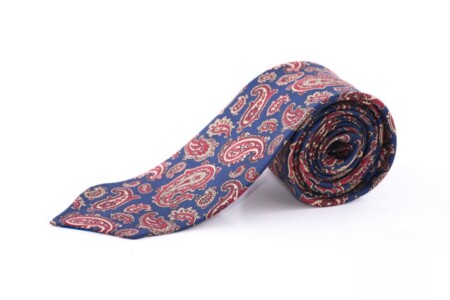



Just as you should avoid heavily patterned and brightly colored ties, an important point here is that Black-Tie Optional does not mean tie optional. Going tieless would simply be too informal a look for a gathering of this nature.
Any Other Type of Formalwear

A final and significant faux pas for a Black-Tie Optional event is wearing a different type of formal ensemble, such as White Tie or Morning Dress. Morning Dress would simply be inappropriate for an event taking place in the evening, and because you should never exceed the level of dress of a party’s host, showing up to a Black-Tie or Black-Tie Optional event in White Tie is also incorrect.
Special Considerations for Weddings
Use Context Clues to Decipher Your Hosts’ Intentions
The Black-Tie Optional dress code is notoriously bewailed by many guests and hospitality professionals because it is relatively vague. As wedding planner Marcy Blum explained to Vogue magazine, “I always call Black Tie Optional the passive-aggressive dress code. If you want people to wear a tux, tell them to do so!”
Nevertheless, if you are invited to a wedding with a Black-Tie Optional dress code, you will be well-served employing a little brainpower to crack the code of this dress code and determine exactly what it is that your hosts want.
Risk Being Underdressed or Overdressed? Apply Common Sense
Depending on your relationship with the hosts of the wedding, you likely have some idea of their customary level of formality and the nature of the wedding they would have planned. If they are generally fancier, more traditional people, it is very likely that they would prefer you arrive in a full Black Tie ensemble. But if they are more casual and laidback, they likely won’t mind at all if you come in a dark suit conforming to the specifications we’ve established above.
Consider the Event Space When Determining Formality
You can also glean additional information from the location of the event. Receptions held in the ballrooms of luxury hotels, historic halls, or country clubs will likely draw more from the tuxedo and evening gown set. Conversely, receptions held in converted barns, dance halls, or social venues might be more appropriate for guests in a dark suit or cocktail dress.
Never misunderstand a dress code again!
Make the Best Decision You Can While Being Respectful of Your Hosts and Other Guests
Ultimately, of course, you will be at the mercy of whether the other guests elect primarily to wear Black Tie or Black Tie Optional, and so there is always a chance that you will either be mistaken for a waiter or a member of the groom’s party, or else be the only gentleman not in a tuxedo.
Rather than worry about these eventualities, we suggest that you cleave to the nature of the Black Tie Optional dress code and simply dress in whichever style will allow you to have the most fun while being respectful of the wishes of the bride and groom.
How to Host a Black Tie Optional Event
Having acknowledged the relative difficulties of receiving a Black-Tie Optional invitation as a guest, let’s turn our attention to the potential hosts of a party that chooses to incorporate Black Tie on some level.
Determining Whether or Not To Make Your Event Black-Tie Optional
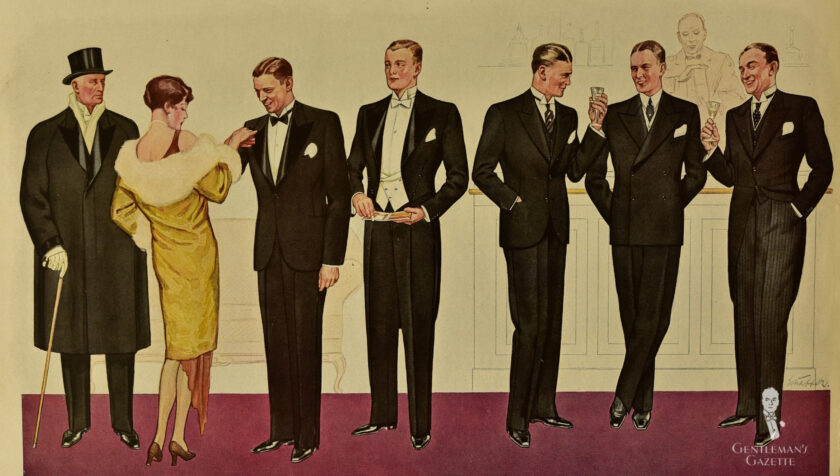
The desire to employ a Black-Tie Optional dress code comes from a good place: hosts want to ensure that everyone, even those without access to proper Black-Tie attire, will feel welcome at the event. The Black-Tie Optional phrasing is likely intended to sound more inviting and less severe.
However, as previously stated, the imprecise nature of this dress code can spawn considerable consternation and unnecessary worry. Ultimately, your guests should be trusted to follow a more precise dress code if they are able to do so.
Therefore, you are better served in most cases electing to avoid the dress code of Black-Tie Optional entirely and instead opt for a dress code with a more concrete meaning.
Consider Employing More Clear Terminology
Black Tie Preferred

This terminology clarifies to the attendees that Black Tie will be worn by at least some of the guests at the party and that it’s being actively encouraged by the host. Still, it isn’t absolutely required, so a man who doesn’t own or can’t afford a tux doesn’t absolutely have to wear one. Also, the Black-Tie Preferred dress code means that you’re probably not going to experience people who are trying to mix levels of formality when they show up to your party.
Creative Black Tie

With Creative Black Tie, you are free to digress from the traditional in one or two elements of your outfit. This is the dress code, in other words, where elements of the standard Black Tie can commingle to some extent with elements of conventional business wear.
For example, you could pair a classic tuxedo with a colorful and patterned bow tie, a pastel-colored shirt, or some playful crazy socks, maybe a more colorful pocket square, or a bold boutonniere, would work equally well here too. Don’t go overboard and descend into full costume wear here, of course, and remember that a little bit goes a long way.


Still, if the hosts have designated the dress code for the party as Creative Black Tie, it is best to loosen up a bit, respect their wishes, and have some fun with what you’re wearing!
Conclusion
Having progressed through this guide, you are now fully versed in all of the particulars and nuances of the Black-Tie Optional dress code, one of the most anxiety-producing dress codes there is. You should feel proud of your accomplishment, and we are sure that you will have an exceptional outfit all ready for your next big Black-Tie Optional event. Have fun!
Black-Tie Optional FAQ
What does “Black Tie Optional” mean?
The dress code “Black Tie Optional” indicates that guests can choose whether to wear a traditional Black-Tie ensemble, commonly referred to as a dinner suit or tuxedo, or a stylistically similar outfit known as a Black-Tie Optional ensemble. This ensemble is described below.
What does a Black Tie Optional outfit include?
Traditionally, a dark suit with a white or blue shirt, a dark, simple tie or bow tie, dark socks, and dark leather shoes. The idea of this outfit is to approximate the formality of a tuxedo without actually being a tuxedo.
Is there a difference between “Black Tie” and “Black Tie Optional?”
Yes, there is. A Black Tie dress code indicates that you will be expected to wear a traditional Black-Tie ensemble, such as a tuxedo. The Black-Tie Optional dress code allows you to wear a Black-Tie ensemble if desired, but you are not required to. You can instead wear the formally styled suit discussed above.
Do I have to wear a tuxedo for a Black-Tie Optional event?
No, you do not. You can instead wear the more-formal suit style discussed above.
Do I have to wear a black tie for a Black-Tie Optional event?
No, you do not. You may instead wear any dark, plain necktie or bow tie, or a black necktie if desired. You should not, however, wear a black bow tie for a Black-Tie Optional event, as the black bow tie is a centerpiece of the Black Tie dress code.
Should my wedding or event be Black Tie Optional?
Black Tie Optional is an often misunderstood dress code. Your guests will probably prefer if you select a more clear dress code. Black Tie Preferred, for instance, makes it very clear to your guests that it is your preference that they wear Black Tie.
Are there different names for Black Tie Optional?
Black Tie, Black Tie Optional, Black Tie Preferred, Creative Black Tie, and similar dress codes may all sound similar, but they are in fact distinct dress codes. Occasionally, you may see the word “Formal” added to the dress code to create “Formal Black-Tie Optional,” but this phrasing simply reiterates the formal nature of the evening and does not change what type of outfit is expected.
Explore this chapter: 2 Black Tie & Tuxedo Etiquette





